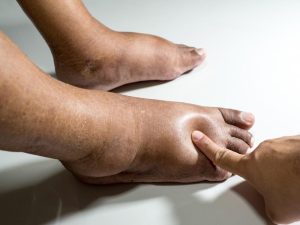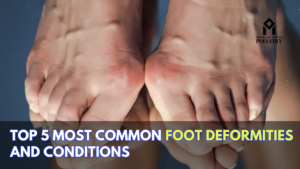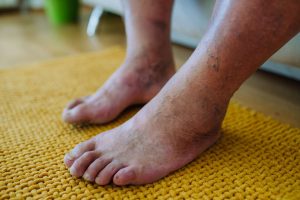Ingrown toenails can be a painful and uncomfortable condition, occurring when the edge of a toenail grows into the surrounding skin. This blog will discuss effective treatment options and helpful tips for managing ingrown toenails, particularly for residents of Illinois, including Chicago, Elmhurst, Tinley Park, Downtown Chicago, and Flossmoor.
What Is an Ingrown Toenail?
An ingrown toenail typically develops on the big toe but can occur on any toe. Symptoms include pain, swelling, redness, and sometimes infection. If left untreated, ingrown toenails can lead to more serious complications.
Causes of Ingrown Toenails
- Improper Nail Trimming:
Cutting nails too short or rounding the edges can lead to ingrowth. - Tight Footwear:
Shoes that don’t fit properly can place pressure on the toenails. - Injury:
Trauma to the toe, such as stubbing or dropping something on it, can cause the nail to grow inward. - Genetics:
Some people may be more predisposed to developing ingrown toenails due to the shape of their nails.
Treatment Options for Ingrown Toenails
- At-Home Care
What to Do:
Soak the affected foot in warm, soapy water for 15-20 minutes to reduce swelling and pain. After soaking, gently lift the edge of the toenail away from the skin using a clean cotton ball or dental floss. - Pain Relief
What to Do:
Over-the-counter pain relievers like ibuprofen or acetaminophen can help manage discomfort. - Topical Antibiotics
What to Do:
Apply an antibiotic ointment to the affected area to prevent infection, especially if the skin is broken. - Proper Footwear
What to Do:
Wear comfortable shoes with plenty of room for your toes to avoid further irritation. - Podiatrist Consultation
What to Do:
If the ingrown toenail does not improve with home treatment, or if there are signs of infection (increased redness, swelling, or pus), consult a podiatrist. They may need to perform a minor procedure to remove part of the nail.
When to Seek Professional Help
Seek immediate medical attention if you experience:
- Severe pain
- Signs of infection (redness, swelling, or discharge)
- A recurring ingrown toenail that doesn’t respond to home treatment
Tips for Prevention
- Trim Nails Correctly
What to Do:
Cut toenails straight across and avoid rounding the edges. Keep them at a moderate length to prevent pressure against the skin. - Choose Proper Footwear
What to Do:
Wear shoes that fit well and provide adequate room for your toes. Avoid tight shoes and high heels. - Practice Good Foot Hygiene
What to Do:
Keep your feet clean and dry. Regularly inspect your toes for any signs of problems. - Protect Your Feet
What to Do:
If you engage in activities that put stress on your feet, such as sports or heavy lifting, consider protective footwear. - Manage Foot Health Conditions
What to Do:
If you have conditions such as diabetes, consult your healthcare provider for proper foot care to prevent complications.
Conclusion
Ingrown toenails can be painful, but with proper care and preventive measures, you can manage and avoid this common issue. If you’re dealing with an ingrown toenail, especially if you live in Illinois, including Chicago, Elmhurst, Tinley Park, Downtown Chicago, or Flossmoor, seek guidance from a healthcare provider or podiatrist for personalized treatment. Don’t let ingrown toenails disrupt your daily life—take action to keep your feet healthy and pain-free!




